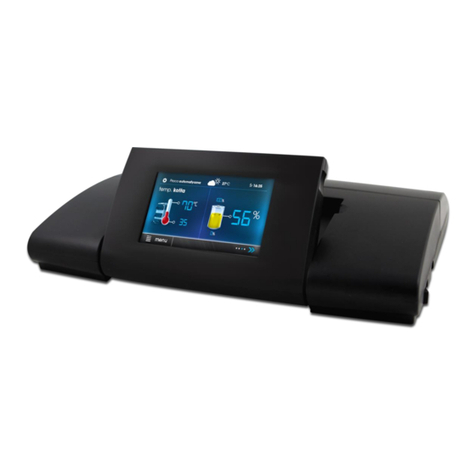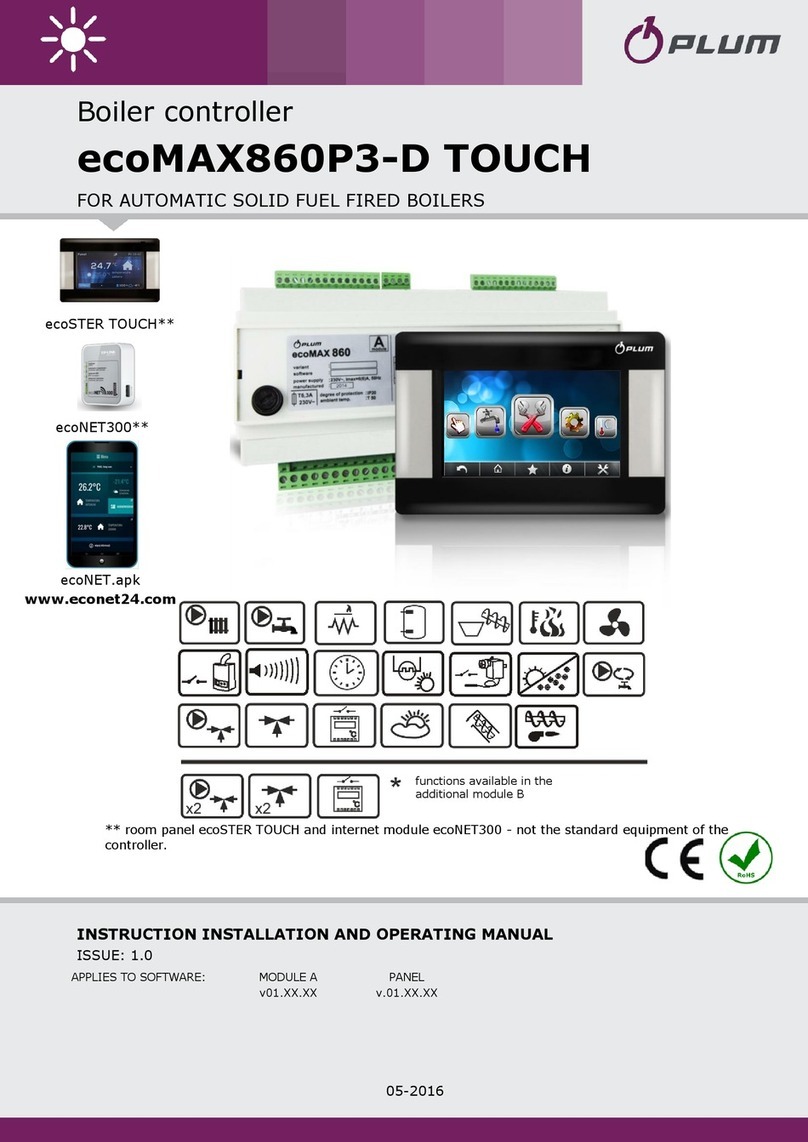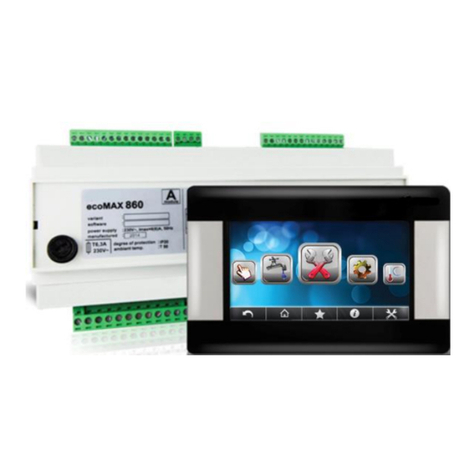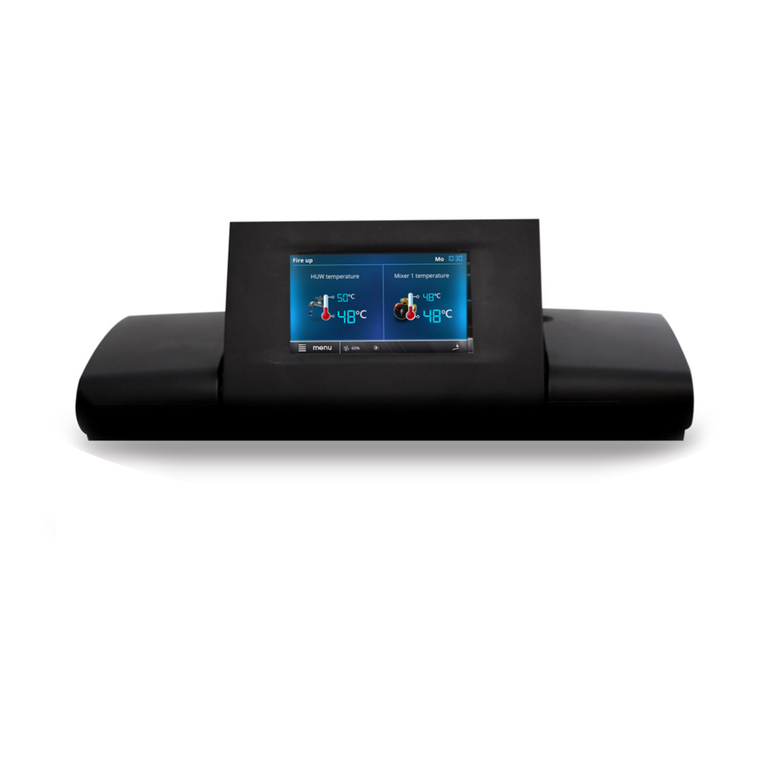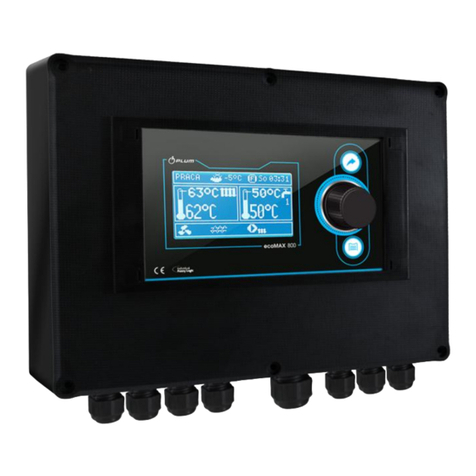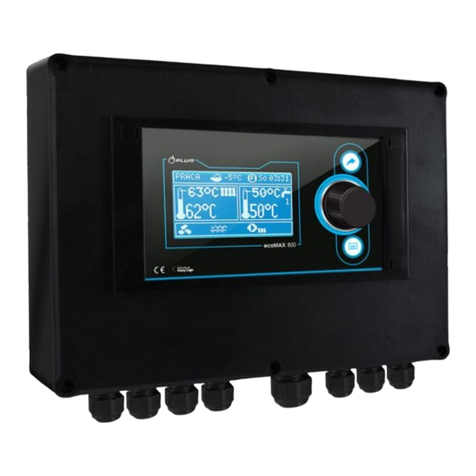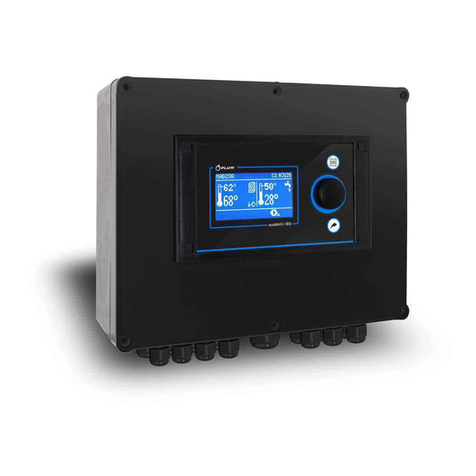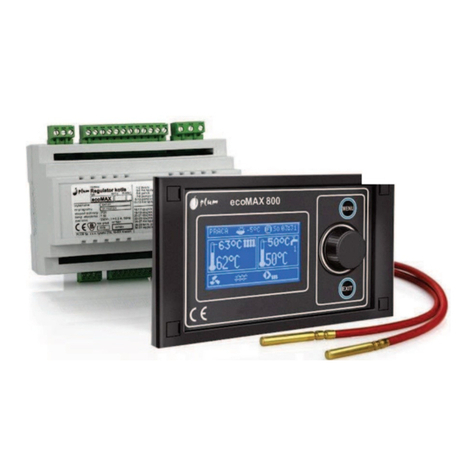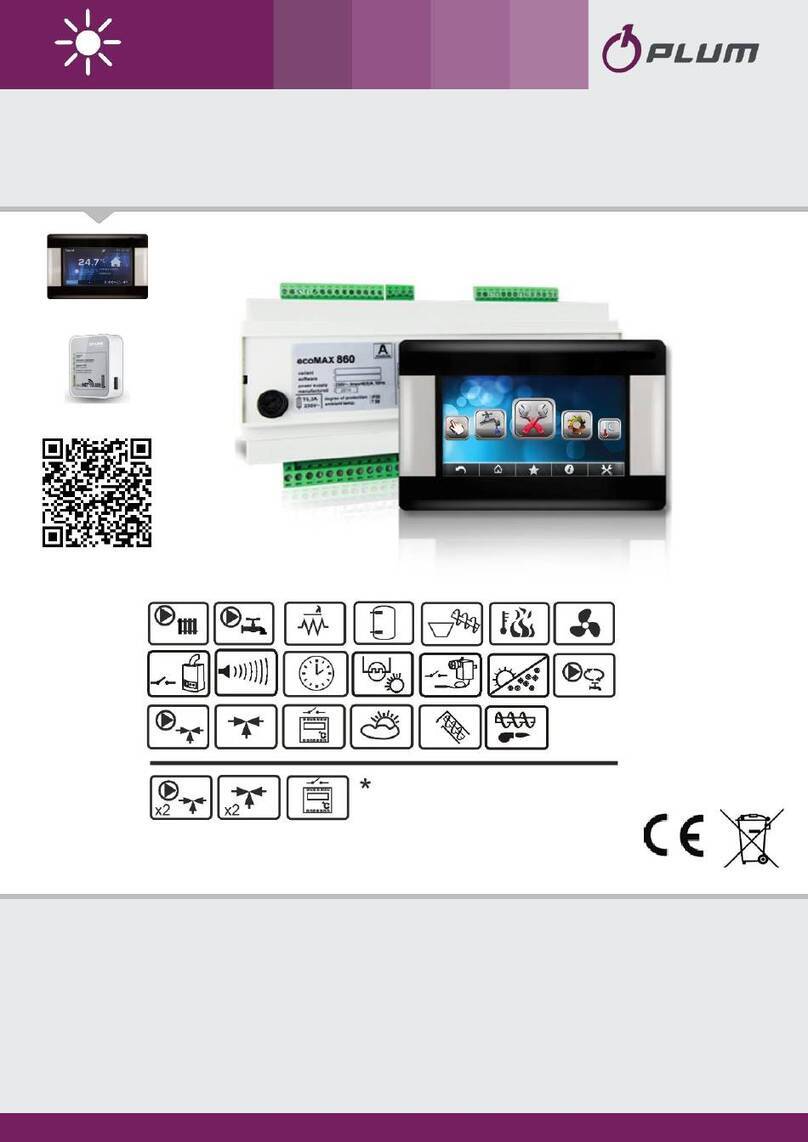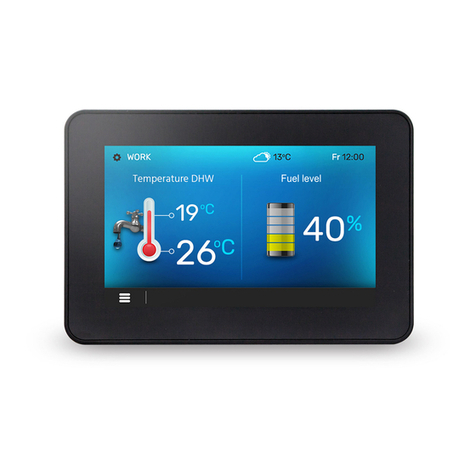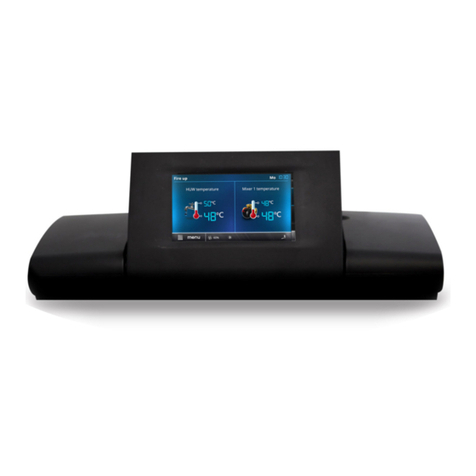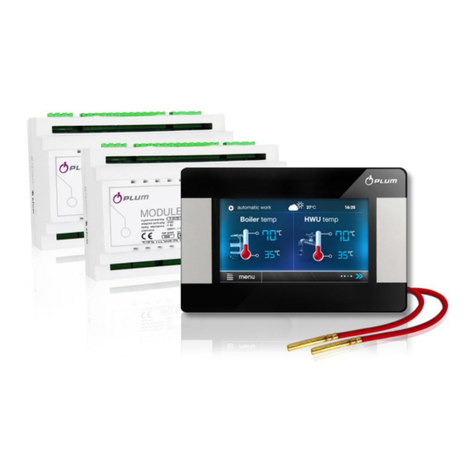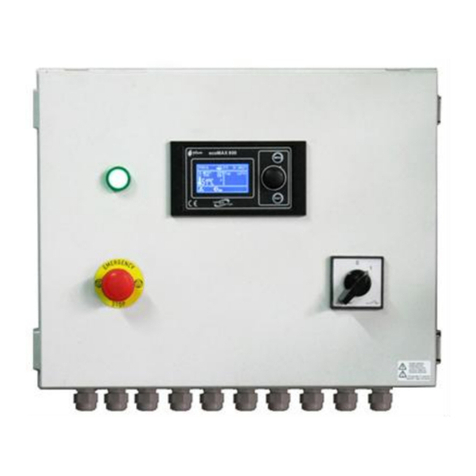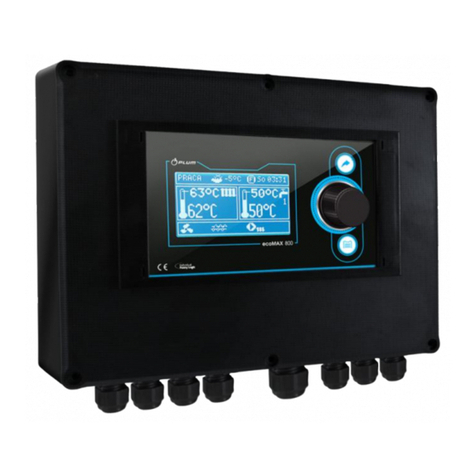
CONTENTS
1RECOMMENDATIONS REGARDING SAFETY ........ 4
2GENERAL ............................................................. 5
3INFORMATION ABOUT DOCUMENTATION......... 5
4STORAGE OF DOCUMENTATION......................... 5
5APPLIED SYMBOLS .............................................. 5
6DIRECTIVE WEEE 2002/96/EG ACT ON
ELECTRICAL AND ELECTRONIC EQUIPMENT ................... 5
REGULATOR INSTRUCTION MANUAL ............ 7
7STRUCTURE –MAIN MENU................................. 8
8OPERATING THE REGULATOR ............................. 9
8.1 DESCRIPTION OF DISPLAY MAIN WINDOW –TOUCH
VERSION............................................................. 9
8.2 SWITCHING ON AND OFF THE BOILER...................... 10
8.3 MAIN WINDOW IN THE STANDARD VERSION ............ 11
8.4 SETTING PRESET BOILER TEMPERATURE................... 12
8.5 FIRING-UP ..................................................... 12
8.6 OPERATION ................................................... 12
8.7 SUPERVISION ................................................ 12
8.8 BURNING OFF................................................ 13
8.9 STANDSTILL ................................................... 13
8.10 DOMESTIC HOW WATER SETTINGS DHW................ 13
8.11 SETTING PRESET DHW TEMPERATURE ................... 13
8.12 DHW TANK HYSTERESIS ...................................... 13
8.13 ENABLING THE SUMMER FUNCTION .................... 13
8.14 MIXER CIRCUITS SETTINGS ................................... 14
8.15 WEATHER CONTROLLED OPERATION ...................... 15
8.16 DESCRIPTION OF NIGHT TIME DECREASE SETTINGS .... 16
8.17 CIRCULATING PUMP CONTROL .............................. 16
8.18 FUEL LEVEL SETUP .............................................. 17
8.19 OPERATION WITH ADDITIONAL FEEDER ................... 17
8.20 INFORMATION................................................... 18
8.21 MANUAL CONTROL ............................................ 18
8.22 FAVOURITE MENU.............................................. 18
8.23 ROOM CONTROL PANEL....................................... 18
REGULATOR INSTALLATION AND SERVICE
SETTINGS MANUAL .................................... 19
9HYDRAULIC DIAGRAMS..................................... 20
9.1 DIAGRAM 1 ...................................................... 20
9.2 DIAGRAM 2 ...................................................... 21
9.3 DIAGRAM 3 ...................................................... 22
10 TECHNICAL DATA .............................................. 23
11 CONDITIONS OF STORAGE AND TRANSPORT ... 23
12 REGULATOR INSTALLATION...............................23
12.1 ENVIRONMENTAL CONDITIONS ..............................23
12.2 INSTALLATION REQUIREMENTS ..............................23
12.3 ASSEMBLY OF CONTROL PANEL ..............................23
12.4 ASSEMBLY OF TOUCH CONTROL PANEL..................24
12.5 DISASSEMBLY OF CONTROL PANEL..........................25
12.6 MOUNTING OF WORKING MODULE ........................25
12.7 IP PROTECTION RATE...........................................26
12.8 CONNECTING ELECTRICAL SYSTEM ..........................27
12.9 WIRING DIAGRAM ..............................................28
12.10 CONNECTION OF TEMPERATURE SENSORS................30
12.11 CONNECTING WEATHER SENSOR ............................30
12.12 CHECKING TEMPERATURE SENSORS ........................30
12.13 CONNECTION OF MIXERS ROOM THERMOSTAT..........31
12.14 CONNECTION OF BOILER'S ROOM THERMOSTAT ........31
12.15 CONNECTION OF RESERVE BOILER ..........................31
12.16 CONNECTION OF ALARM SIGNALLING......................32
12.17 CONNECTION OF MIXER .......................................33
12.18 CONNECTING TEMPERATURE LIMITER STB...............33
12.19 CONNECTING ROOM PANEL ..................................33
13 SERVICE MENU STRUCTURE ..............................34
14 SOFTWARE UPGRADE........................................36
15 DESCRIPTION OF ALARMS .................................37
16 OTHERS..............................................................37
16.1 POWER SUPPLY DECAY.........................................37
16.2 ANTI-FREEZING PROTECTION.................................37
16.3 FUNCTION OF PROTECTING PUMPS AGAINST
STAGNATION .....................................................37
16.4 REPLACEMENT OF MAINS FUSE ..............................37
16.5 REPLACEMENT OF CONTROL PANEL ........................37
17 REVISION HISTORY ............................................38
